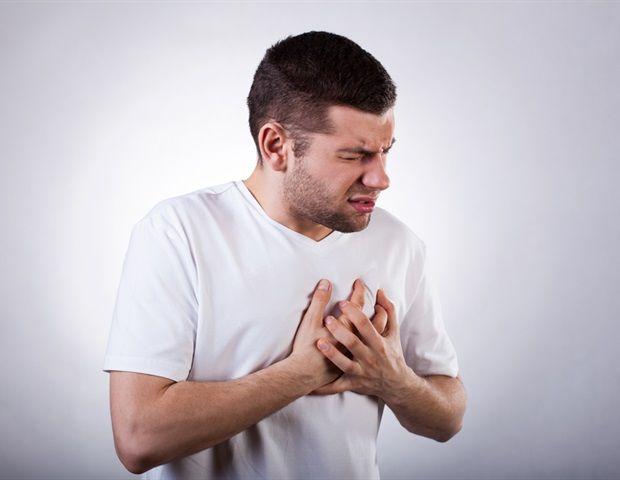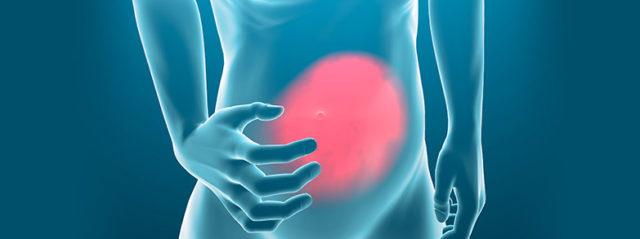An ulcer is like a nasty canker sore (or crater) that typically develops either on the lining of the stomach (a gastric or peptic ulcer) or at the opening of the small intestine in the duodenum (a duodenal or peptic ulcer). Ulcers occur due to an imbalance of digestive juices or if the stomach lining suffers some form of damage (i.e., alcoholism).
An ulcer can be extremely painful, so it’s difficult to ignore if you develop one. However, if left untreated, the ulcer can eat into the stomach wall causing a perforated ulcer or the blood vessels causing a bleeding ulcer, and resulting in damaging and excruciating health complications.
Here are ten very evident signs that you may be suffering from an ulcer…
An ulcer is like a nasty canker sore (or crater) that typically develops either on the lining of the stomach (a gastric or peptic ulcer) or at the opening of the small intestine in the duodenum (a duodenal or peptic ulcer). Ulcers occur due to an imbalance of digestive juices or if the stomach lining suffers some form of damage (i.e., alcoholism).
An ulcer can be extremely painful, so it’s difficult to ignore if you develop one. However, if left untreated, the ulcer can eat into the stomach wall causing a perforated ulcer or the blood vessels causing a bleeding ulcer, and resulting in damaging and excruciating health complications.
Here are ten very evident signs that you may be suffering from an ulcer…

1. Abdominal Pain
Pain in your abdomen, typically between the breastbone and belly button region, may follow a meal as the stomach empties. The pain will often come and go in waves of burning or stabbing pain.

2. Increased Indigestion
An ulcer can cause terrible indigestion and gas pain, which usually means burping and hiccupping following meals.

3. Nausea
Due to an imbalance of digestive juices, you will likely feel mild to severe nausea with an ulcer, typically first thing in the morning on an empty stomach.

4. A Heavy Abdomen
It’s quite common as an ulcer develops to feel a sensation of heaviness or fullness in the belly, similar to a weight or the burdensome feeling you get after consuming a lot of water.

5. Flu-like Symptoms
Most ulcer patients will mistakenly shrug off flu-like symptoms—such as fatigue, general malaise, fever, and nausea—as the flu.

6. Appetite Loss
The sudden and sharp stomach pains that many ulcer patients feel a few hours after a meal (during the digestion phase) will often cause them to fear eating or totally lose their appetites.

7. Unexplained Hunger
It’s also quite typically to feel hunger pangs with an ulcer a few hours after eating a full meal. These aren’t hunger pains, but rather ulcer pains caused by increased digestive juices.

8. Sudden Weight Loss
With a loss of appetite naturally comes sudden weight loss due to lack of eating. You may also suffer from a sudden weight loss if your ulcer is causing you to vomit frequently after meals.

9. Discolored Stool
Bowel movements can appear darker, pasty (or flour colored), or even carry tinges of bloody if your ulcer is growing in size or becoming more severe (i.e., developing into a bleeding ulcer).

10. Bloody Vomit
Vomiting is typical with an ulcer due to the high levels of digestive juices sloshing around in your intestines and stomach. However, if vomit contains traces of blood is present; your ulcer is advanced and needs attention immediately.


1. Abdominal Pain
Pain in your abdomen, typically between the breastbone and belly button region, may follow a meal as the stomach empties. The pain will often come and go in waves of burning or stabbing pain.

2. Increased Indigestion
An ulcer can cause terrible indigestion and gas pain, which usually means burping and hiccupping following meals.

3. Nausea
Due to an imbalance of digestive juices, you will likely feel mild to severe nausea with an ulcer, typically first thing in the morning on an empty stomach.

4. A Heavy Abdomen
It’s quite common as an ulcer develops to feel a sensation of heaviness or fullness in the belly, similar to a weight or the burdensome feeling you get after consuming a lot of water.

5. Flu-like Symptoms
Most ulcer patients will mistakenly shrug off flu-like symptoms—such as fatigue, general malaise, fever, and nausea—as the flu.

6. Appetite Loss
The sudden and sharp stomach pains that many ulcer patients feel a few hours after a meal (during the digestion phase) will often cause them to fear eating or totally lose their appetites.

7. Unexplained Hunger
It’s also quite typically to feel hunger pangs with an ulcer a few hours after eating a full meal. These aren’t hunger pains, but rather ulcer pains caused by increased digestive juices.

8. Sudden Weight Loss
With a loss of appetite naturally comes sudden weight loss due to lack of eating. You may also suffer from a sudden weight loss if your ulcer is causing you to vomit frequently after meals.

9. Discolored Stool
Bowel movements can appear darker, pasty (or flour colored), or even carry tinges of bloody if your ulcer is growing in size or becoming more severe (i.e., developing into a bleeding ulcer).

10. Bloody Vomit
Vomiting is typical with an ulcer due to the high levels of digestive juices sloshing around in your intestines and stomach. However, if vomit contains traces of blood is present; your ulcer is advanced and needs attention immediately.




